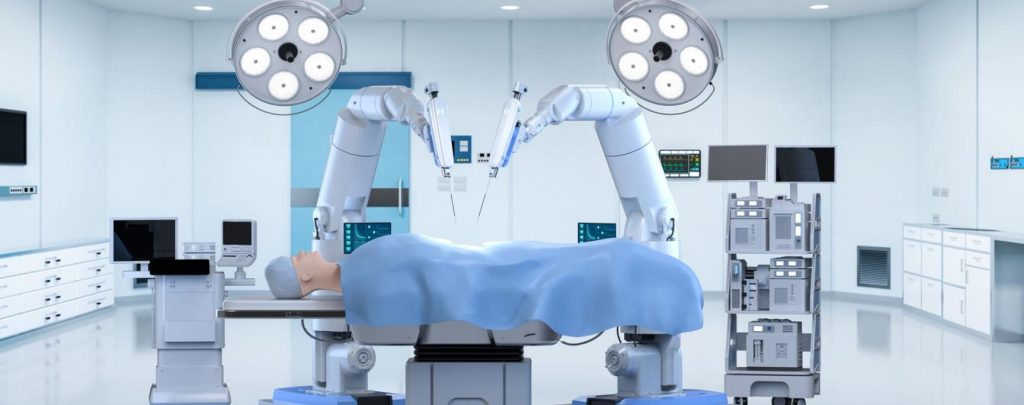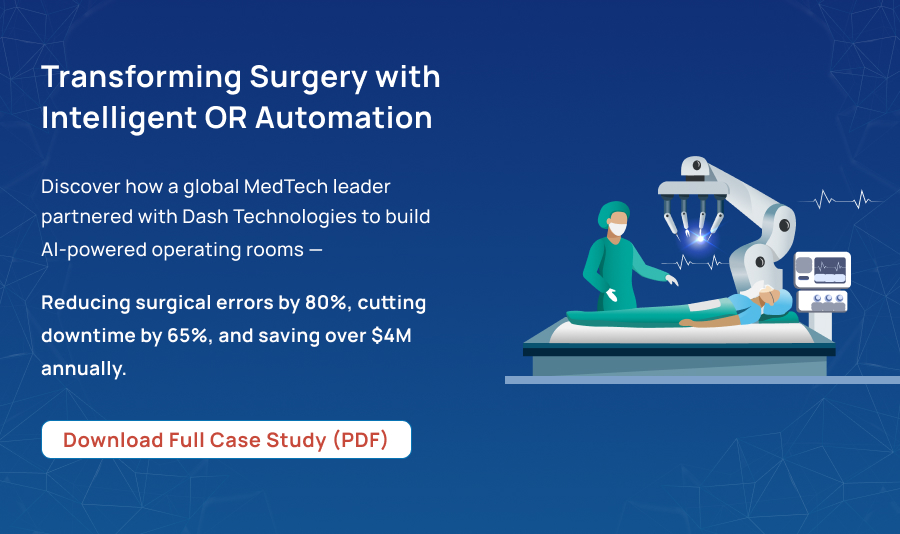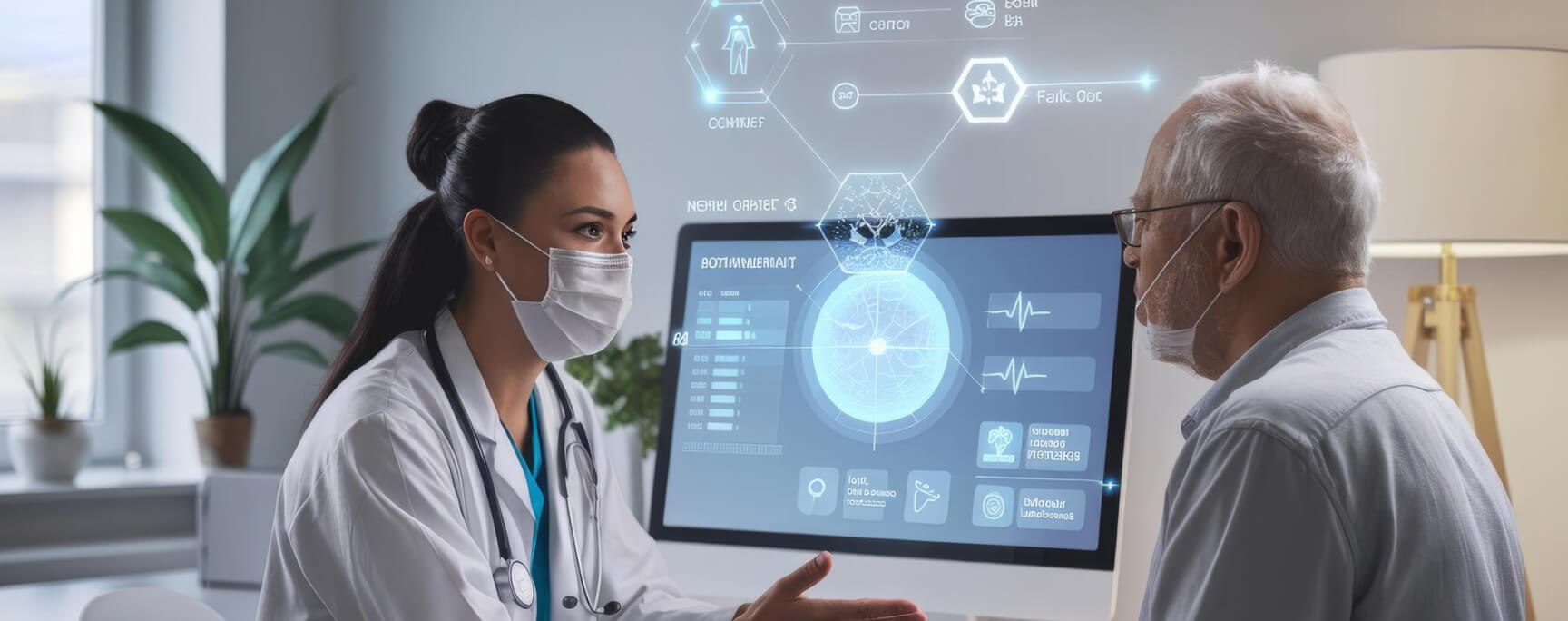AI Surgical Automation Case Study : Cutting Surgical Errors by 80% and Saving $4M Annually
Introduction: How AI Is Redefining the Operating Room
Surgical teams face mounting pressure lately. Packed schedules loaded with complex procedures, razor-thin error margins; it’s coming from every direction. Artificial intelligence isn’t replacing anyone here. Think of it more as a reliable backup; the kind you’d genuinely want to stand beside you. Browse through any AI in surgery success story and you’ll notice a pattern: skilled surgeons partnering with smart automation produce quantifiable wins. Mistakes decline. Procedures accelerate. Patients recover faster.
Hospital executives are becoming this reality now. Traditional methods? They’re failing. Clunky manual processes and systems that won’t communicate hold everyone back. This AI-powered MedTech solutions project documents exactly what happened when a heavyweight global innovator partnered with Dash Technologies Inc. Their aim was straightforward yet ambitious: to remake their operating rooms into intelligent hubs where clinical professionals and technology mesh seamlessly.
Client Overview: A Global Leader in Surgical Innovation
Our client is a multinational MedTech company, and hospitals all over the world depend on their intelligent surgical systems and OR technologies daily. They’ve been in this industry for over a decade, constantly working to bring robotics, imaging, and data precision together in products that genuinely help.
What drives them? They want surgeons to see better during procedures, have tighter control over instruments, and feel confident using their equipment.
Despite advanced surgical devices, operational workflows remain problematic. Manual processes dominate. Data exists in isolated systems. Platforms lack interoperability. This creates a fundamental misalignment: while hardware represents cutting-edge innovation, surrounding operations reflect outdated practices. The gap between AI-powered MedTech solutions and fragmented processes has become the organization’s primary strategic concern.
The Challenge: Manual Workflows, Fragmented Systems & Compliance Hurdles
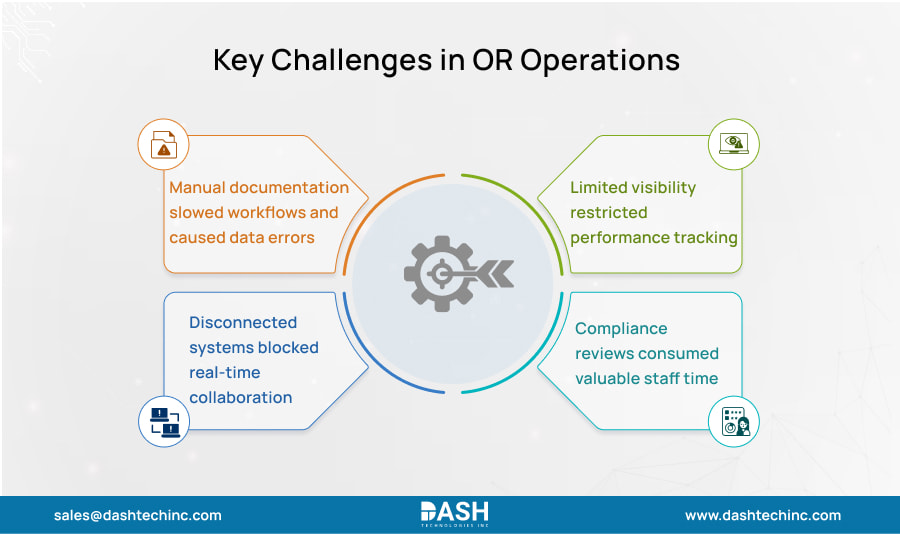
Operating rooms demand precision and speed. This healthcare organization, however, watched its surgical personnel spend excessive time on manual documentation and work with disconnected technology infrastructure. Advanced surgical instruments existed in their facilities, yet outdated operational methods constrained performance.
Key challenges included:
- Manual documentation: Staff recorded surgical information and procedural notes manually. This method extended completion times and created risk points for data inaccuracies.
- Disconnected systems: Medical imaging devices, patient monitoring systems, and surgical apparatus operated without integration. Information sharing across platforms did not occur in real-time.
- Limited data visibility: System fragmentation blocked effective performance measurement. Understanding operational trends and planning resource allocation became problematic when data remained scattered.
- Compliance overhead: Meeting healthcare regulatory standards meant additional manual review procedures. Staff dedicated substantial time to these tasks, which increased operational vulnerability.
- Workflow disruptions: Medical professionals manage both patient care duties and technology interaction requirements simultaneously. This divided attention reduced focus on clinical activities.
These gaps compound daily. Delays in surgical prep, fragmented communication, and inconsistent data capture put pressure on both efficiency and safety. The client needed a solution that could unify their OR ecosystem, streamline documentation, and ensure compliance automatically, without forcing clinicians to change the way they work. AI for hospital operations represented the solution path this organization needed.
The Solution: Building a Dynamic, AI-Powered OR Ecosystem
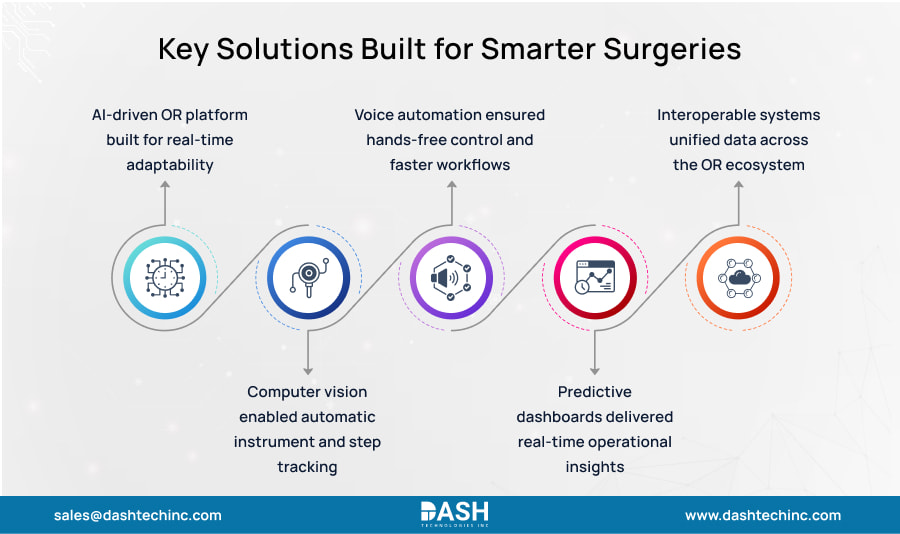
We partnered with the client to tackle fragmented workflows and compliance challenges. The two organizations developed a next-generation, AI-driven operating room platform together. This project went beyond basic automation. The engineering team built intelligent surgical systems that understand context, adapt to shifting conditions, and improve with each procedure.
This AI surgical automation case study included these key elements:
- Computer vision in surgery: Instruments get recognized automatically. Procedural steps receive continuous tracking. Sterile zones undergo real-time monitoring. Requirements for manual intervention fell sharply. Human error rates dropped significantly.
- Voice-enabled OR automation: Surgeons and staff now control equipment without touching anything. Patient data gets accessed, and notes get recorded hands-free. Procedures move faster. Sterility standards remain intact.
- Predictive dashboards: Data on OR performance, device readiness status, and compliance metrics all appear in real time. Unified data integration makes this level of visibility possible.
- Interoperable ecosystem: Hospital systems that operate in isolation now connect seamlessly. Data flows transparently across all platforms.
A smart surgical ecosystem emerged from these innovations. The OR environment became intelligent and self-learning. Safety improved measurably. Precision increased substantially. Operational efficiency rose across every single procedure.
Three-phase Plan: From Automation to Intelligent Orchestration

We ran a three-phase plan to improve AI operating room efficiency and produce concrete results in surgical workflows. The first phase focused on automation. The final result was an advanced, coordinated operating platform; a clear AI in surgery success story.
The three phases:
- Phase 1: Automation through AI and Computer Vision
Staff installed camera systems with AI features to identify surgical instruments and verify sterility on their own, and flag anomalies without human input. Setup times dropped sharply, and accuracy increased. - Phase 2: Cross-System Collaboration
The team connected surgical scheduling, electronic health records, anesthesia monitoring, and imaging systems into one network. This delivered OR workflow automation in healthcare, letting data flow instantly across systems so doctors can decide faster. - Phase 3: Voice-Driven Workflows
Voice commands give surgeons hands-free control for everyday operations. Want to adjust the lighting, view an imaging scan, or log a step in the procedure? It could all be done by voice, improving speed, hygiene, and focus.
The outcome: a data-driven operating room where AI tools, vision systems, and voice recognition work as one platform for safe, efficient surgical procedures.
The Results: Faster, Smarter, More Profitable Surgeries
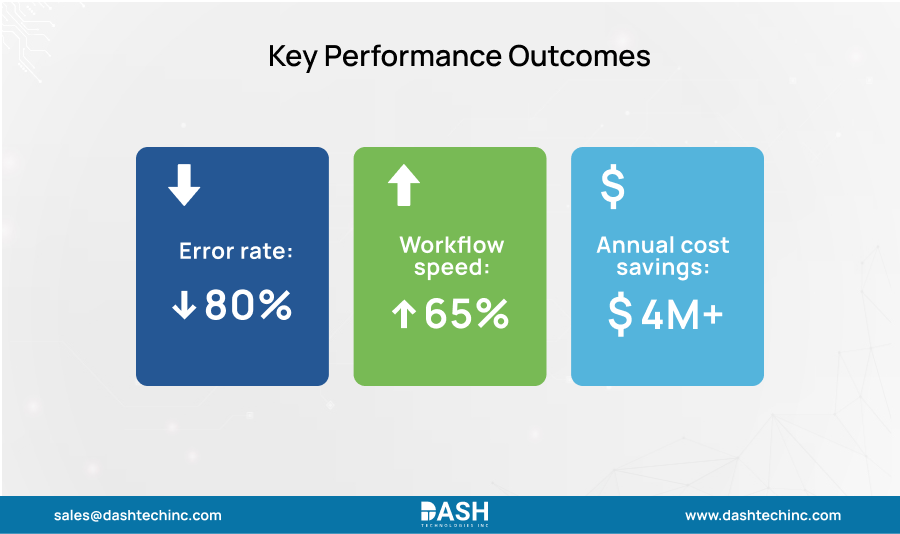
Our AI-Driven OR Automation delivered measurable outcomes:
- 80% reduction in surgical errors: Smart automation prevented the most critical operational mistakes, boosting patient safety.
- 65% faster workflows: Streamlined communication and documentation meant surgeries were completed more efficiently.
- $4M annual savings: The hospital saved a lot by using resources more efficiently. Shorter procedures led to fewer complications while lowering the overall admin costs.
These quantifiable improvements mentioned in this AI surgical automation case study were directly translated into a safer, smarter, and more profitable surgical operation.
Why It Matters: Shaping the Future of Intelligent Surgical Systems
This AI for hospital operations transformation signals where the entire industries are headed. Robotic surgery, predictive modeling, networked healthcare infrastructure—they’re not future concepts anymore. They’re the current reality.
Facilities implementing intelligent surgical systems now position themselves for tomorrow’s demands. Machine learning keeps accelerating diagnostic support. Analytics creates real-time operational visibility that seemed impossible years ago. Systems adapt quicker, handle regulations better, and prove more resilient when confronting complex clinical scenarios.
Next-generation operating rooms aren’t arriving someday. It is happening now.
The DASH Difference: Engineering Smarter, Connected Healthcare
What sets Dash Technologies apart from crowded healthcare tech markets? We deliver OR workflow automation in healthcare transformations, producing documented outcomes scaling across entire organizations. Our methodology consistently:
- Arms decision-makers with practical insights exactly when choices matter, avoiding report burial.
- Emphasizes intuitive design through sensible interfaces and hands-free features that integrate naturally with established clinical patterns instead of forcing disruption.
- Satisfies regulatory and security standards spanning diverse, complex compliance frameworks.
We don’t sell software packages. We engineer holistic integrations combining staff, equipment, and analytics into working ecosystems, establishing fresh standards for AI-powered MedTech solutions performance.
Looking for detailed technical specifications and implementation of roadmaps? This comprehensive AI in surgery success story covers system architecture, deployment stages, and practical insights drawn from actual implementation. Grab the complete case study PDF.
About Dash

Dash Technologies Inc.
We’re technology experts with a passion for bringing concepts to life. By leveraging a unique, consultative process and an agile development approach, we translate business challenges into technology solutions Get in touch.
